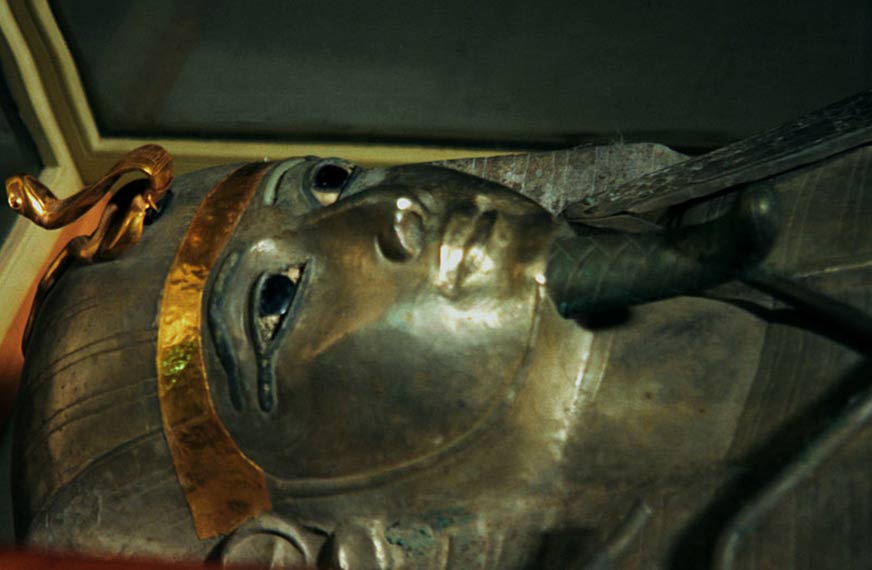The ancient Egyptians erected massive public monuments to their pharaohs. They also spent time and money building hidden underground mausoleums. But did you know which tomb was discovered completely intact?
Only one Egyptian pharaonic tomb of Psusennes I has been discovered entirely intact. Despite its fame and the high quality of its artifacts, Tutankhamun’s tomb was robbed twice in antiquity.
What is the Significance of Tombs in Ancient Egypt?
Archaeologists discovered much of what we know about ancient Egypt by studying tombs. A tomb is a place where you are buried after death. The ancient Egyptians believed that life continued after death. Death, on the other hand, was more like a temporary stop on your way to another place, which they called the afterlife. Only pharaohs could hope to enter the world of the afterlife during the Old Kingdom.
In ancient Egypt, when a pharaoh died, he was buried in a royal tomb. During the Old Kingdom, royal tombs were housed within massive structures known as pyramids. Although the common people were disappointed that they would not be able to enter the afterlife, constructing the pharaoh’s pyramids gave them great pleasure. Building a pyramid was understood to signify love and respect for the pharaoh throughout the Two Lands, Upper Egypt and Lower Egypt. For the ancient Egyptians, constructing a pyramid was akin to building a new palace for the pharaoh, one he would call home in the afterlife. (Source: History Histories)
Pharaoh’s Afterlife and Eternal Home
The afterlife was a place that resembled Egypt to the ancient Egyptians. As a result, they wanted their pharaoh’s tomb to be beautiful and comfortable. They could be confident that their pharaoh would spend his afterlife surrounded by the things he cherished. As a result, the inside of a pyramid was designed to resemble a palace.
Building a pyramid was a huge undertaking. It took time and thought. Work on a royal’s tomb began the day they crowned Pharaoh. Work on a pharaoh’s wife’s tomb begins the day he is married.
The pyramids had courtyards, storage rooms, lofty halls, and secret passageways. Each room’s walls were covered with beautiful paintings, relief sculptures, and hieroglyphic writing that told about the life and times of the person buried inside. The rooms were filled with beautiful statues and clothes, gold-plated toys and games, trinkets and jewelry, and anything else the pharaoh might need in the afterlife.
While the pharaohs’ tombs were magnificent, it’s important to remember that at the time they were constructed, not everyone could enter the world of the afterlife. However, things changed when the democratic god Osiris was elevated to the position of the Egyptian god of the afterlife. Osiris decreed that everyone had the right to enter the next world, the afterlife.
The afterlife was not an eternity spent above the clouds for the Egyptians. Instead, it was the Field of Reeds, a place that mirrored their life on Earth. The Egyptians’ afterlife was more like an eternal Egypt, a perfect reflection of their lives. The idea that they could enter the world of the afterlife delighted commoners who loved their lives along the Nile. (Source: History Histories)
Image from Ancient-Origins.net
